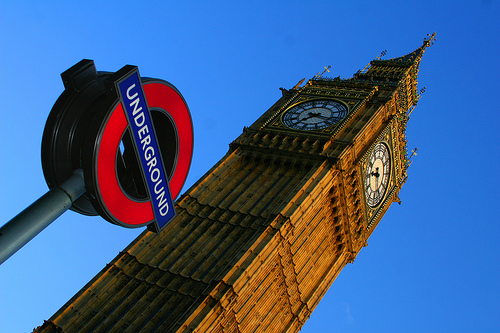Big Ben
Although many believe it to be so, Big Ben is in fact not the name of the famous London clock but rather it is name of the 13 ton bell which is inside it. The bell can be found in St. Stephen’s Tower at the northern end of the Houses of Parliament. The bell itself is relatively young in comparison to the houses of parliament. In 1859, the year it was completed, it was the largest bell in the United Kingdom.
The tower, which holds the bell, is also called the clock tower. The clock itself is immense. Its minute hand is 14 feet long and the figures are 2 feet high while the four dials are 23 feet square. Despite its size and age, Big Ben is an excellent timekeeper and rarely stops. The accuracy of the clock is maintained by using old coins. A light shines from the top of St. Stephen’s Tower when Parliament is in session after dark. At night when the four clock faces are alight, the clock tower looks spectacular.

Timekeeping on Big Ben is accomplished by placing a stack of coins on the huge pendulum. The clock tower managed to survive a bomb destroying the Commons chamber during the Second World War and afterwards Big Ben continued to strike for hours.
The BBC first broadcast the chimes of Big Ben on 31 December 1923, a tradition that continues to this day.
In 1834, fire destroyed the Palace of Westminster. In 1844, it was decided the new buildings for the Houses of Parliament should include a clock and Tower. In 1858, the bell itself was redesigned in Whitechapel and on 31 May, 1859, Westminster first heard the clock ring.
Big Ben cracked just two months later. The bell was rotated to its present position to a section of the hammer that wasn’t damaged section of the hammer and a much lighter hammer was then fitted. This is the bell that we hear today.
Although the origin Big Ben’s name is not known, there are two different theories. The first says that it was named after the commissioner of works, one large man named Sir Benjamin Hall who was affectionately known as Big Ben. The second theory is that it was named after Benjamin Caunt, who, at the time was a heavyweight boxing champion. He was also known as Big Ben and this nickname was routinely bestowed to all things that were the heaviest in its class in society.

